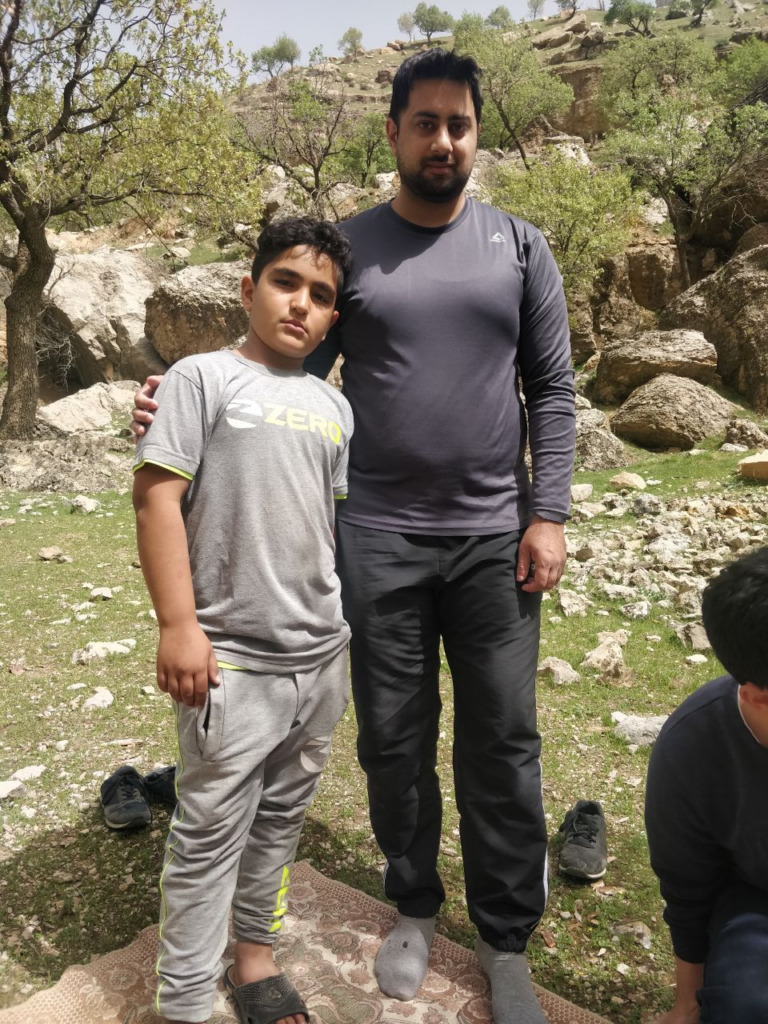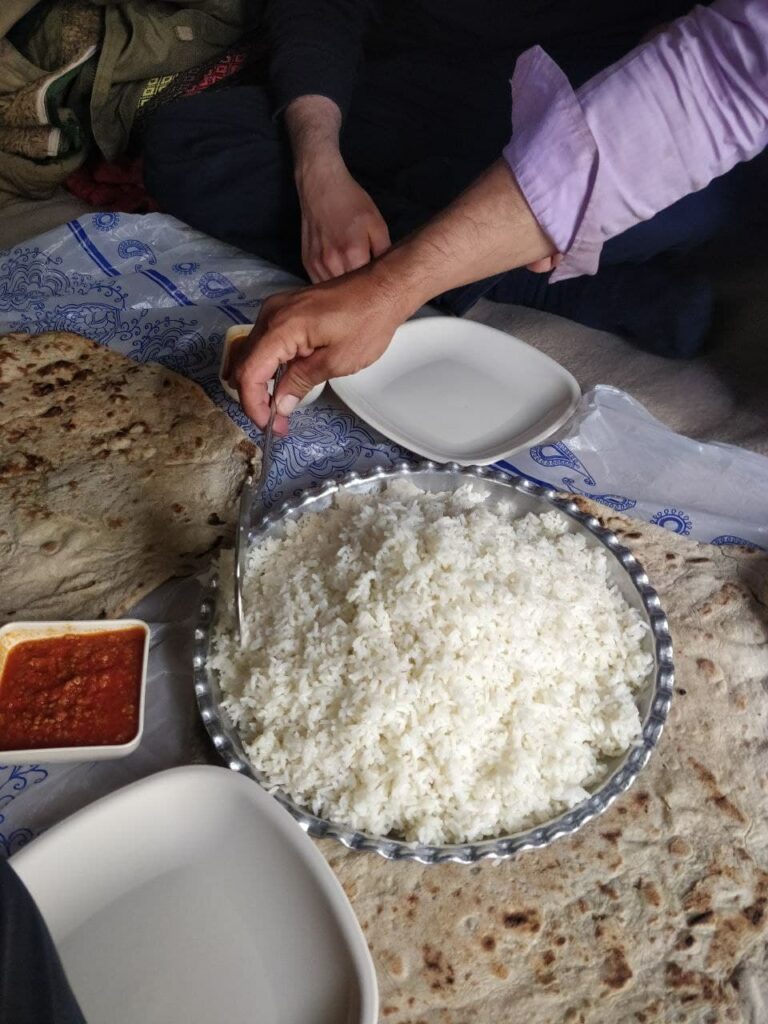When reflecting upon various learning and growth opportunities I experienced during my time in the seminary of Qom between 2012 to 2021, one of the most profound educational experiences I had was in the summer of 2021. I and 2 other friends from the seminary decided to drive to a canyon called Shirez Canyon, and I was hoping we would encounter some nomadic tribes. Though the nomadic population of Iran has been decreasing since the 20th century, it still has one of the largest populations in the world.
The nomad population of Iran has been at the centre of various national discussions pertaining to their future survival, education opportunities for their children, and certain national policies concerning them. Anyone interested in the topic can search for a lot of published material on them. We drove 4 hours from Qom to Khorramabad and stayed around two nights there first. From Khorramabad to Shirez was a 3-hour drive. We spent a major part of the day with a nomadic family from the Bakhtiari tribe.


This specific family engaged in nomadic pastoralism which is the practice of taking livestock from pasture to pasture in response to the seasonal weather and growth of forage. As we spent the next few hours with them, there were a lot of interesting things I noted.
Foremost, the difficult living conditions of the Bakhtiari family was not something I was accustomed to. For most of us, a significant portion of our formal learning happened within the comfort of the four walls of a classroom. Even in the seminary, perhaps the most complex – yet relatively shallow – discussion one would have about the physical learning environment was whether students should sit on tables and chairs in a class, or should they be on the floor (like it is perceived about the Najaf seminary, though I am not sure how true this perception is now). These experiences have primarily been passive, with minimal active learning. Similarly, for most of us growing up in the West and in urban areas, the structure of our school buildings and their designs instilled various conceptions of what passive or active learning is meant to be like and we have hugely been impacted by this.
With the nomadic family though, learning was not occurring within the four walls of a physical school building, rather it was taking place while transitioning between a small tent and an open field in the middle of a canyon. Members of the family would work together with a lot of movement required throughout the day, be it while travelling or even just to engage in daily tasks.
Spending time with them allowed me to witness first-hand the tradition of a tribal governing system. Obedience to the father figure of the clan was very clear and members of the family and extended family had very little privacy. Compliance and adherence to hierarchy were part of the fabric of the nomadic family structure due to the substantive experiences the family would go through daily. The day-to-day activities would be coordinated by the father-head, who would often consult his sons and sons-in-law, but the top-down chain of command was very evident. Young pre-teen and teenage children would be asked to pass communication and directions between the men and women during the day as they were more agile. Though the womenfolk had very little role to play in conversations about plans and decisions for the course of the day, there was a strong affinity and satisfaction towards this system by the family.
Their day generally began with a simple breakfast, followed by preparation to go into the mountains to gather wood, twigs and large rocks, so they could cook and light a fire. The tasks these children and adults were participating in were those fundamental activities that made human civilization what it was.

Children were not playing with toys, and in fact, I did not see any toys at all during my time with them. Instead, children often spend the day playing with one another, coming up with creative games, or with their animals. It was only natural that these children would grow up becoming very familiar with survival skills in harsh conditions, learning how to manage their herd, learning how to navigate on land, as well as become equipped to utilize mules and horses efficiently. As I reflected on my own childhood, I realized how relatively sheltered I was growing up from skills that have remained the building blocks of human civilizations and detached from these aspects of human life.
Another important feature of this learning environment was the fact that one was living very close to nature. On this specific day, we were in a beautiful canyon, with wildlife, wild fruits and several water springs. In some cases, there was a genuine fear of death and injury, and the life of the Bakhtiaris was always on the edge. There was a lot of uncertainty about what tomorrow held. Life does indeed have a lot of uncertainties but living with the Bakhtiaris taught me powerful lessons about trust and hope, and gave these concepts an independent tangible existence.

At a later point in the day, we had lunch with the father-head in his tent. It was very simple food: rice, bread that was made from scratch by the womenfolk, and some sort of stew. After eating, we offered to help him wash the dishes, to which he harshly responded, “No, we don’t touch the dishes. That is the job of the womenfolk!” We had violated their social conventions by even making such a suggestion. Though labour work was divided, men and women were engaged in very traditional gender roles with clear boundaries on who ought to do what task. The women were very strong and engaged in difficult physical work, but the protection of the womenfolk was the sole responsibility of the men, while the ladies were responsible for cooking, cleaning, and looking after younger children.
The one thing that struck me during our day was the right foot of the father-head, who was by now an elderly man. His right foot was twisted and he would walk with a heavy limp. He kept inquiring throughout the day, whether the West has come up with a way where they can amputate someone’s limb and connect an entirely new limb to them. We kept telling him that such a procedure would be extremely difficult and no such procedure exists. The question – which he would repeatedly ask in different ways – seemed to have been asked from a point of wishful thinking, and from a sense of regret of not being able to live his life with a normal foot. When we asked whether the issue with his foot was from birth or not, he told us that when he was 3 years old, his mother took him to a nearby village where they were giving all young children a certain vaccine (unfortunately I do not remember at all what type of vaccine it was). At that time, doctors were apparently unaware that one of the side effects of that vaccine was that it would give certain children this foot paralysis, and he happened to be one of the boys who was impacted by that side effect. So since the age of 3, his foot had been deformed, a rather harsh consequence of modern technology and medicine leaving an imprint on a nomad forever.
Though our time with the Bakhtiari family was short-lived, we were put in a context where several unique features of their life were brought together at once, which allowed for both depth and breadth of learning in a short time. The open space, the tribal governing system, their family values, the daily routine, and closeness to nature were all features we do not generally get to experience in schools, or we may receive temporary exposure to one or two of these features. The permanence of these features for the nomadic family facilitates a type of learning that propels learning of various skill sets, helps them refine their morals, and strengthens their mental and physical well-being. These short-lived experiences that I gained travelling to over 35 cities and villages in Iran were often far more valuable and powerful than the years spent in the seminary.
Sayyid Ali studied in the seminary of Qom from 2012 to 2021, while also concurrently obtaining a M.A in Islamic Studies from the Islamic College of London in 2018. In the seminary he engaged in the study of legal theory, jurisprudence and philosophy, eventually attending the advanced kharij of Usul and Fiqh in 2018. He is currently completing his Masters of Education at the University of Toronto and is the head of a private faith-based school in Toronto, as well as an instructor at the Mizan Institute and Mufid Seminary.

